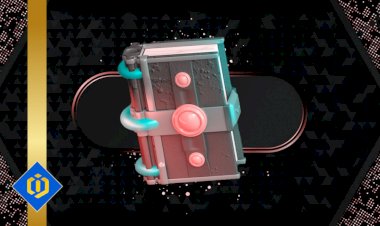What Role Did Gold Play in the Age Old Civilizations?

Ever since the dawn of human civilization, gold has been a highly prized commodity. Due to its scarcity, aesthetic appeal, and malleability, it has long been prized for its value and versatility. It has been used for everything from currency and jewelry to religious artifacts and decorative items. This article will examine the discovery and utilization of gold in various ancient civilizations, focusing on how it affected their growth and culture.
gold's discovery and mining.
About 4,500 years ago, gold was first uncovered in ancient Egypt. When the Egyptians discovered gold deposits in the Nile, they quickly started mining the metal in Egypt's desert regions. Jewelry, ornaments, and even royal masks were made from the gold mined in ancient Egypt. Gold was seen as having magical qualities by the Egyptians, who also saw it as a representation of the sun god Ra. The pharaoh was thought to be protected in the afterlife and granted eternal life by gold.
Gold was also mined by the Greeks and the Romans, with the Romans having the most success. In order to extract gold from deeper and more difficult-to-reach deposits, they developed cutting-edge mining methods, such as the use of hydraulic mining. Similar to the Egyptians, the Greeks thought that the sun god Apollo was associated with gold. The use of gold coins as currency was a significant development in ancient Greece. Gold was used to make coins, jewelry, and decorative items.
The Incas of South America mined gold from the Andes, which supplied a sizable portion of the gold used in their jewelry and religious artifacts. The Incas thought that gold was the sun's sweat and that it could bring them luck and protection. They thought that gold had the ability to communicate with the gods and used it in religious rituals.
Gold was extracted from deep mines in the mountains as well as from rivers and streams in ancient China. China placed a high value on gold, which was used to create coins, jewelry, and home decor. Trade was made easier to conduct thanks to the use of gold coins as money, which promoted economic expansion. Gold was used in religious rituals in China because of the people's belief that it had spiritual qualities.
the effects of gold on the economy and trade.
Ancient civilizations' trade and economies were significantly impacted by the discovery and mining of gold. Many civilizations, including ancient Egypt, Greece, and Rome, placed a high value on gold and used it as money. Trade was made easier to conduct thanks to the use of gold coins as money, which promoted economic expansion. Many ancient civilizations' economies grew and developed as a result of the gold trade.
Gold was a commodity that was traded in addition to being used as money. It was highly sought after due to its scarcity and beauty, and it was frequently exchanged for other valuable commodities. The trade in gold helped to foster economic growth and development in many ancient civilizations.
a gold's influence on culture and art.
Another significant factor in gold's influence on ancient civilizations was its use in art and culture. Gold was frequently connected to the divine and the paranormal and was used to create jewelry, decorative items, and even religious artifacts. In addition to allowing for the creation of new styles and techniques, the use of gold in art and decoration also helped to preserve earlier cultures and traditions. Gold was used to create many of the most famous works of art from historic cultures, including the death mask of Tutankhamun and the gold Inca diadems.
The golden statue of Athena in the Parthenon and the dome of the Basilica of San Vitale in Ravenna are examples of architectural marvels made with gold. There was a sense of opulence and grandeur when gold was used in architecture because it was frequently connected to the powerful and divine. Gold was used in both architecture and art, which facilitated the creation of fresh trends and methods while preserving older customs and cultures.
old civilizations' use of gold as a legacy.
Even today, we can still see the impact that gold had on ancient civilizations. Gold continues to be a highly prized commodity due to its scarcity and beauty, and the use of this precious metal in trade and as money has a significant impact on the world economy. Many of the most famous pieces of ancient architecture and art are still admired and studied today, demonstrating the lasting influence of the use of gold in art and decoration.
Furthermore, modern technologies have made it possible for mining techniques that are more effective and efficient than those used in earlier eras. With nations like China, Russia, and Australia being major producers of the metal today, gold mining is still an important industry in many parts of the world.
The legacy of gold in ancient civilizations is controversial, though. Gold mining frequently resulted in severe environmental damage and was linked to exploitation and violations of human rights. Gold mining is still being forced upon many indigenous communities in South America and Africa under appalling circumstances.
Conclusion.
Ancient civilizations' development and cultural practices were greatly influenced by the discovery and use of gold. Gold was extremely valuable and sought-after because of its scarcity and beauty, and its use in trade and as money promoted economic growth. The development of new styles and techniques as well as the preservation of outdated culture and customs were made possible by the use of gold in art and decoration. Due to gold's continued high value as a commodity and ongoing research into its effects on human history, the legacy of gold in ancient civilizations is still felt today.
Author: Pooyan Ghamari, Economist Visionary and Specialist in Gold and Banking

 content-team
content-team 


















